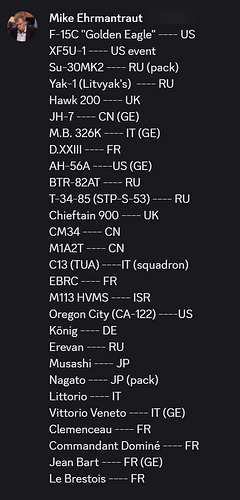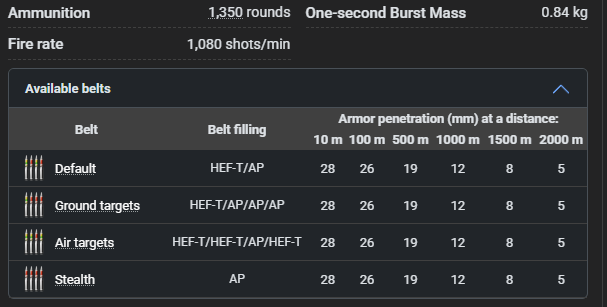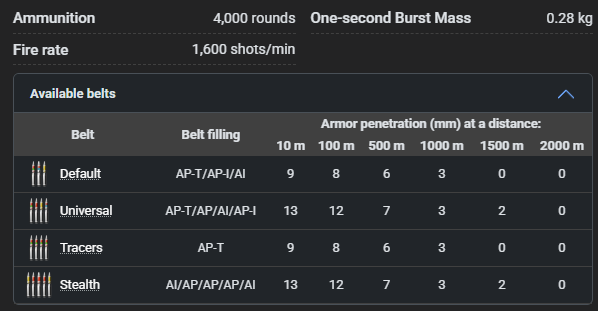- Yes.
- No.
- In a future Dutch/BeNeLux techtree.
- In the French BeNeLux sub-tree
- Other (Please explain in the comments).
- I said “No” in the first question.
Hello everyone! Today I’m going to suggest the Fokker D.23 Prototype!
The D.23 Prototype during a test flight
Source: Foto's
This is the single seat, twin-boom, Push-pull configuration Fokker D.23 Prototype!
History
Spoiler
The Fokker D.23’s story starts in the 1930’s. Around 1937 Fokker was busy with many different militairy aircraft like the D.21, G.1, T.5 and T.9. On top of those research department was busy with new figher designs, specifically the Ontwerp (Meaning “Design”) 150 and 151 (Single engine fighters, kind of a further development of the D.21. These two designs had also been given the name D.22).
But during their research into different engine configurations, they determined that a twin engine fighter that had both engines in a tandem configuration actually came with some very nice benefits. With this information a new design was started, given the name Ontwerp 155.
A blueprint of the Ontwerp 155. Note the two different landing gear configurations.
Source: “Fokker D.23” book, by Willem VredelingThe 155 was a sleak fast looking design with two 528 hp Walter Sagitta I-SR engines. On the blueprint of the 155 we also see two different landing gear configurations. First a Tricycle setup that used a fixed nose landing gear of the Fokker D.21, and second a Conventional taildragger design. Weaponry planned for the 155 was six machine guns, two per wing, and two in the lower fuselage below the pilot.
During further development different engines were also proposed. During the early development the 850 hp Gnome Rhône M14 M and 1.050 hp Rolls Royce Merlin were proposed. The Merlin one getting the name Ontwerp 156, and the Gnome Rhône one the Ontwerp 157. Blueprints of these can be found in the spoiler below.
Spoiler
The Ontwerp 156, with the two 1.050 hp Rolls Royce Merlin engines
Source: “Fokker D.23” book, by Willem Vredeling
The Ontwerp 157, with the two 850 hp Gnome Rhône M14 M engines
Source: “Fokker D.23” book, by Willem Vredeling
Once the new aircraft design had been brought up during a meeting at Fokker it was decided to give the design priority over everything else, and would work quickly continue on the design. The Ontwerp 156 and 157 were not chosen due to the engines not being available to purchase, so work was focussed on the Ontwerp 155. (Work on the 156 and 157 did continue very slowely from time to time however)
First changes to the original design was the landing gear. The conventional taildragger design had to little clearance for the rear propellor, so the tricycle setup was chosen. The fixed Fokker D.21 nose gear was also abandoned, instead Fokker looked for a European company that specialized in retractable nose gears for aircraft.
Around this time the Paris Air Show of 1938 was comming up, and Fokker desperately wanted to show of the Ontwerp 155 there. So it was decided to make a wooden Mockup of the aircraft to display there. But this wouldn’t just be some basic mockup, this would be a fully complete, highly detailed mockup that would convince potential buyers that the aircraft was the real deal.
The D.23 mockup with many panels removed, showing the highly detailed internal construction of the aircraft
Source: https://www.fokker-history.com/d-xxiiiThe new nose gear was made by the company “Olaer” and worked without any flaws. In the meantime the planned weaponry of two 7.9mm FN-Browning and two 13.2mm FN-Browning machine guns were ordered and delivered. Live firing trails of the machine guns on a stationary stand were also carried out by Fokker.
During the Paris Air Show the Ontwerp 155 drew many crowds. I should also mention that the official name of D.23 was given to the Ontwerp 155 when the Paris Air Show began. So in the press many reporters were going on about the bold new D.23 made by Fokker.
The D.23 on display at the Paris Air Show of 1938
Source: Foto'sFollowing the big succes of the D.23 Mockup, it was now time to make an actual Prototype. The Mockup was a great template for the actual Prototype. Most wooden panels and components were to now be made of metal, but the wings (which were also planned to be of a fully metal construction) were to be made of wood due to time constraints.
One odd thing that showed up around this time was airbrakes. The Dutch Air Force wanted the D.23 to be able to carry some light bombs too, and for that role dive breaks were needed too. The dive breaks were made but ended up not being fitted to the D.23. Instead they went to the Fokker G.1 Mercury “302”, which tested these breaks during multible test flights. But it’s still interesting that the D.23 almost had air breaks.
Just like any tandem configuration aircraft, one big important question comes up. How does the Pilot eject out of the plane without being turned into minced meat by the rear propellor? And this problem also showed up for the D.23. Crews that worked on the D.23 had given it the nickname “Vliegende Gehaktmolen” (Flying Mincer).
Ejection seats were not invented yet, and emergency propellor breaks were to complicated to make for the Prototype. So the sollution chosen was to add metal clamps to either side of the cockpit which the pilot could grab to pull himself allong the fuselage of the aircraft. This would get the pilot to be near the bottom of the fuselage, and would be clear of the rear propellor which was mounted high in the fuselage.The rather athletic test pilot Gerben Sonderman saw this as an acceptable solution, and he deemed his chances of escape were very high if he ever had to bail out.
The D.23 Prototype around the time of it’s first flight
Source: Foto'sThe D.23 Prototype was going to be used for many test flights to work out any faults in the design, and so was not fitted with the planned armaments as seen on the Mockup. The aircraft had been given the registration number X-4.
On the 20th of May 1939 the engines were started up for the first time. This was followed by the first taxt tests the next day. These taxi tests showed that the nose gear was not very good, the plane had a hard time turning and required the engine’s rotational forces to get the aircraft to turn in certain directions. The Mr. Mercier of the Olaer company was present and came up with various improvements they can make to the nose wheel to fix these issues. He told Fokker that a new Prototype of this nose gear would be delivererd in a few months.
The 30th of May 1939 marked the first day the D.23 would make it’s first flight. The first two flights were just a small circel around the airfield followed by a quick landing. Just the basic stuff for a new Prototype aircraft.
What followed were more test flights, but I’m not going to mention these since I don’t want to make this post any longer then it already is. I will share the important points that were found during the test flights:
- When starting the aircraft it tended to move to the right. So the left brake would have to be used to stop this.
- When speeding up the rudder has to be moved all the way to the left to keep it straight.
- Landing is very easy and the plane behaves very well.
- In flight the engine rotational forces are balanced.
- The power required to move the control surfaces are heavier then desired for a fighter.
- The rear engine suffered from severe overheating due to a lack of airflow.
- Making turns at full power, and doing any kind of aerobatics cannot be done due to the overheating engine.
- Above an altitude of 4000 meters the engines were not very powerfull and would begin to smoke.
From these first flights up till the 10th of May 1940 the aircraft would go through many more tests, and also a big rework phase. One main focus was the air intake for the rear engine, it had to be cooled better to avoid the overheating issue. The entire air intake was reworked at one point, which would increase the air flow into the engine. This helped a bit, but still the engine was overheating.
Problems with the nose gear grounded the D.23 on the 2nd of April 1940. This was the 11th flight of the D.23, and would also be the last. By the time of the German invasion of the Netherlands the D.23’s nose gear was still not fixed.
Fokker’s chief designer M. Beeling (Left) and test pilot Gerben Sonderman (Right)
Source: Foto's
Design
Spoiler
An illustration of the D.23
Source: UnknownThe Fokker D.23 was a Single seat, Twin engine, tandem configuration, twin boom fighter aircraft. The aircraft was powered by two 528 hp Walter Sagitta I-SR engines with one in the nose and one in the rear fuselage. Both propellors spinned in differrent directions which helped to balance out their rotational forces.
The aircraft had a top speed of 525 km/h at an altitude of 4.100 meters. And it’s cruise speed at the same altitude was 390 km/h.
Weaponry planned for the D.23 was two 7.9mm FN-Browning machine guns and two 13.2mm FN-Browning machine guns. These weapons were brand new at this time, and very powerfull.
- The 7.9mm FN-Browning machine gun had a rate of fire of 1.500 rounds per minute, with 500 rounds of ammunition per gun.
- The 13.2mm FN-Browning machine gun had a rate of fire of 1.000 rounds per minute, with 200 rounds of ammunition per gun.
The 7.9mm FN-Browning machine gun ammuniton feed, located in the bottom of the fuselage
Source: “Fokker D.23” book, by Willem Vredeling
The 13.2mm FN-Browning machine gun located in wing’s tail roots
Source: Foto'sThe aircraft was made of an mixed contruction of metal and wood. The main bodywork of the fuselage was made of metal and covered with metal panels. But the wings were made of wood.
A single 400 liter fuel tank was located in the center of the fuselage, above the wing. This gave the aircraft a range of 870 km.
Blueprint of the Fokker D.23’s wing
Source: Modelbrouwers.nl modelbouw • Toon onderwerp - Fokker D-XXIII rs-models 1/72
Fate
Spoiler
Test pilot Gerben Sonderman, the only pilot that flew the D.23. I’d like to add that every single photo I’ve seen him in he’s always smiling and seems to be having a great time being a test pilot of Fokker
Source: Foto'sThe D.23 was not able to live up to it’s full potential due to the German invasion of the Netherlands. But there were plans for the next D.23 aircraft. The biggest thing that had to be changed were the engines. The problematic Walter Sagitta engines had to be changed. Different versions with different engines were proposed. The engines were the 670 hp Rolls Royce Kestrel XV, the 720 hp Junkers Jumo 210 G, the 700 hp Isotta Fraschini Delta RC ID, and there is also a blueprint of one with 690 hp Hispano-Suiza 12Xcrs engines.
In the spoiler below you can find blueprints of some of the designs with different engines.
Spoiler
670 hp Rolls Royce Kestrel XV, 2 x 7.9 mm and 2 x 13.2 mm machine guns
Source: “Fokker D.23” book, by Willem Vredeling
720 hp Junkers Jumo 210 G, 2 x 7.9 mm and 2 x 13.2 mm machine guns
Source: “Fokker D.23” book, by Willem Vredeling
690 hp Hispano-Suiza 12Xcrs, 4 x 7.5 mm machine guns and 1 x 20 mm Hispano-Suiza 404 autocannon. Most likely designed as an export attempt to propose to the French Air Force
Source: “Fokker D.23” book, by Willem Vredeling
Following the German invasion of the Netherlands on the 10th of May 1940 all work on the D.23 was stopped. At the time the D.23 was in a hanger at the Schiphol airport awaiting repairs on it’s nose gear.
Two weeks later three German Gentlemen of the E-Stelle (Erprobungsstelle der Luftwaffe, they are a testing site for aircraft) showed up at Schiphol. They had been tasked to check out the Fokker factory and the D.23 that was here at Schiphol. One Fokker D.21 had already been send to their testing site at Reichlin, and now the D.23 was next.
It turned out that the D.23 was something the Germans really wanted to have a look at due to it’s revolutionary design. Two specific things were of great interest, the retractable nose gear, and the tandem configuration of the engines.
The D.23 had been lightly damaged during the German invasion, but was still in good condition. There was a back and forth between Fokker and the Germans to get the aircraft repaired and flown to their testing site at Rechlin, but in the end the German interest started to fall.
Eventually the D.23 was destroyed during an attack on the Schiphol airport, and the remaining parts were send to a Fokker factory for scrapping. There are talks going around of people having taken parts of the D.23 to keep for themselves, but for all we know nothing remains of the aircraft to this day.
It’s interesting when you look at revolutionary Fokker aircraft, there seems to be a pattern where Fokker creates something great but then get’s outshined by some other manufacturer that makes an aircraft of the same design some years later.
- Fokker made the twin engine, twin boom Fokker G.1 heavy fighter in 1937. And yet everyone only remembers the American P-38 that has the same design but was from 1939.
- Fokker made the twin engine, tandem configuration Fokker D.23 fighter in 1939. And yet everyone only remembers the German Do-335 that has the same design but was from 1943.
I find it sad that so little people know about Fokker aircraft, and so I’m going to try my best to shine more light on them!
A drawing showing the different engine options for the D.23. From top to bottom: Walter Sagitta I-SR / Rolls Royce Kestrel XV / Junkers Jumo 210 G / Hispano-Suiza 12Xcrs
Source: Unknown
Specifications
Spoiler
Blueprint of the Fokker D.23 Prototype
Source: Modelbrouwers.nl modelbouw • Toon onderwerp - Fokker D-XXIII rs-models 1/72
Crew: 1 (Pilot)
Length: 10.2 m
Wingspan: 11.5 m
Height: 3.8 m
Wing area: 18.5 m2
Empty weight: 2,300 kg
Full weight: 3,000 kg
Powerplant: 2 x Walter Sagitta I-SR (528 hp)
Cruising speed: 390 km/h
Maximum speed: 525 km/h
Service ceiling: 9,200 m
Service ceiling on one engine: 5,500 m
Max range: 870 km
Armament
Guns:
2 × 13.2 mm FN-Browing machine gun
2 × 7.9 mm FN-Browing machine gunAmmunition
13.2 mm FN-Browing machine gun - 200 rounds per gun
7.9 mm FN-Browing machine gun - 500 rounds per gun
A performance sheet of the D.23 with different engines
Source: “Fokker D.23” book, by Willem Vredeling
Ingame
Spoiler
As usualy with my Dutch vehicle suggestions, I ofcourse want to see this ingame in a Dutch or BeNeLux techtree. The D.23 is in my opinion simply the most unique fighter design Fokker has ever made.
This D.23 Prototype would be a perfect Rank 2/3 fighter. It might not have the best performance for Rank 3, but it’s 13.2mm machine guns with HE filled rounds are absolutely lethal at any BR. It’s biggest achilles heel is the overheating rear engine. Experienced players could fine tune the engine controls to get the most out of them, but most players will simply have to hold back on the throttle unless absolutely needed.
Personally I would love to see this in a Dutch/BeNeLux techtree. This aircraft would be the main Rank 2/3 fighter for a potential Dutch fighter line. But let me know where you would like to see this ingame in the poll above!
Ofcourse the BeNeLux has been added to France, so this is now the only option where Dutch Aircraft will go to. But it must be said that the Netherlands and France have nothing in common, and do not make sense to combine together ingame.
A photo taken of the rear of the D.23 Prototype during a test flight
Source: Foto's
So there you have it! Please make sure to vote in the poll above, and let me know what you think of this very unique D.23 Prototype!
Extra photos
Sources
Spoiler
Main source:
- “Fokker D.23” book, by Willem Vredeling
Secondairy sources:
Extra sources:
- https://www.fokker-history.com/d-xxiii
- Fokker D.XXIII - Wikipedia
- Fokker D.XXIII prototype tweemotorig jachtvliegtuig registratie X-4 LVA registratie: 998 … - collectie - Nationaal Militair Museum
Photos:
A video of the Fokker D.23.






































